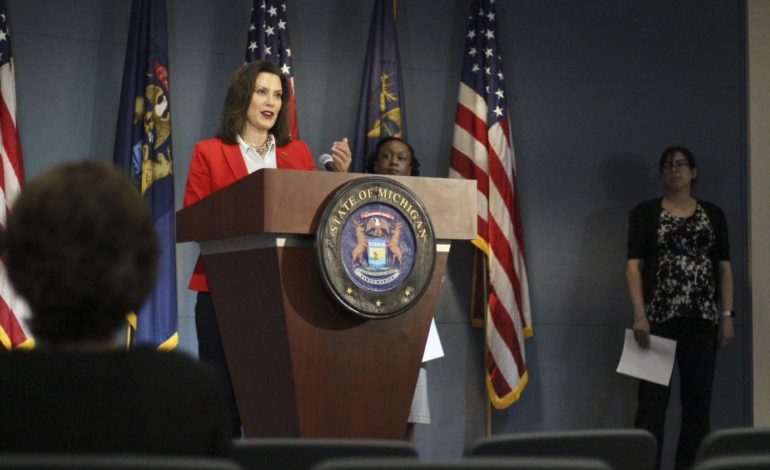LANSING — Governor Whitmer’s stay-at-home order will likely be extended beyond May 1, at least for a short term, she said during a press conference earlier this afternoon.
Whitmer had previously said on Monday that the ensuing 10 days would help decide whether or not an extension would be warranted, but said today that those who are compromised and vulnerable to COVID-19 must continue to stay home.
“We are going to have to look at the process of reengaging sectors of our economy,” she said. “There will need to be an extension of some sort. We know that even when we get to a stable moment, that people who are compromised and vulnerable to COVID-19 are still going to need to stay home.
The governor said that numbers are improving, but testing is important going forward to help keep the virus from harming more people.
“We’re seeing a trend where our numbers look pretty good, but we still need to do more robust testing,” she said. “We see these signs and perhaps we can start taking some small steps forward, but now is an appropriate time to reassess the breadth of the current stay-at-home order and assess the scope of what the next one might look like.”
Coronavirus cases in Michigan grew to 33,966 and deaths attributed to the virus reached 2,813 as of Wednesday afternoon according to the Detroit Free Press.
The most important factors for potentially returning to work include gloves and masks, whether each job is indoor or outdoor, contact with the public and how to continue social distancing guidelines in the workplace, Whitmer said in regards to employers within the state. More details are expected to be provided during her Friday update, during which she will be joined by UAW and business leaders.
Whitmer spoke with the Small Business Association of Michigan and MSNBC on Tuesday night, during which she began outlining the parameters for the administration’s strategy for reopening Michigan.
On MSNBC, Whitmer noted Georgia’s decision to reopen businesses, including nail salons, tattoo parlors, gyms and fitness centers, bowling alleys and barbers. But she said it won’t happen in Michigan without strict guidelines.
“Those would be some of the last things to come online when we do start to reengage sectors of our economy,” she said. “The last things to come on line are the ones that are so intimately public facing, especially if there’s not the appropriate PPE (personal protection equipment) that’s available.”
She added that the state is writing rules that have “never been written before in a very short period of time” and that more information will be provided soon.
“Even though we don’t have a lot of specific information, she said a couple of pretty important things,” said SBAM President and former Lieutenant Governor Brian Calley. “She talked about face coverings and N-95 masks. She’s not thinking about having to apply medical standards, but OSHA (Occupational Safety and Health Administration) standards for businesses. And that’s something that’s pretty doable.”
Small businesses are being asked to do things they have never done before like health screenings of employees and finding out the availability of PPE, said Rob Fowler, CEO of SBAM, adding that the organization is ready and willing to play a role.
Whitmer issued her first “Stay at Home, Stay Safe” order on March 23, one week after shutting down restaurants and bars. She originally wanted a mid-June emergency declaration, but state lawmakers successfully worked to change it to May 1.
Republicans in Michigan’s legislature have offered their own plans on how to gradually reopen the economy and would like to see some of those actions taken before May 1, the Free Press reported, in hopes of staving off further economic devastation.
“This pandemic has created a lot of fear and uncertainty – because of the virus itself and for our families concerned they won’t be able pay their bills or put food on the table because they’ve been laid off work,” said Rep. Joseph Bellino (R-Monroe). “It is my hope the governor accepts our plan as an opportunity to work with the legislature in a bipartisan, collaborative way.”






Leave a Reply